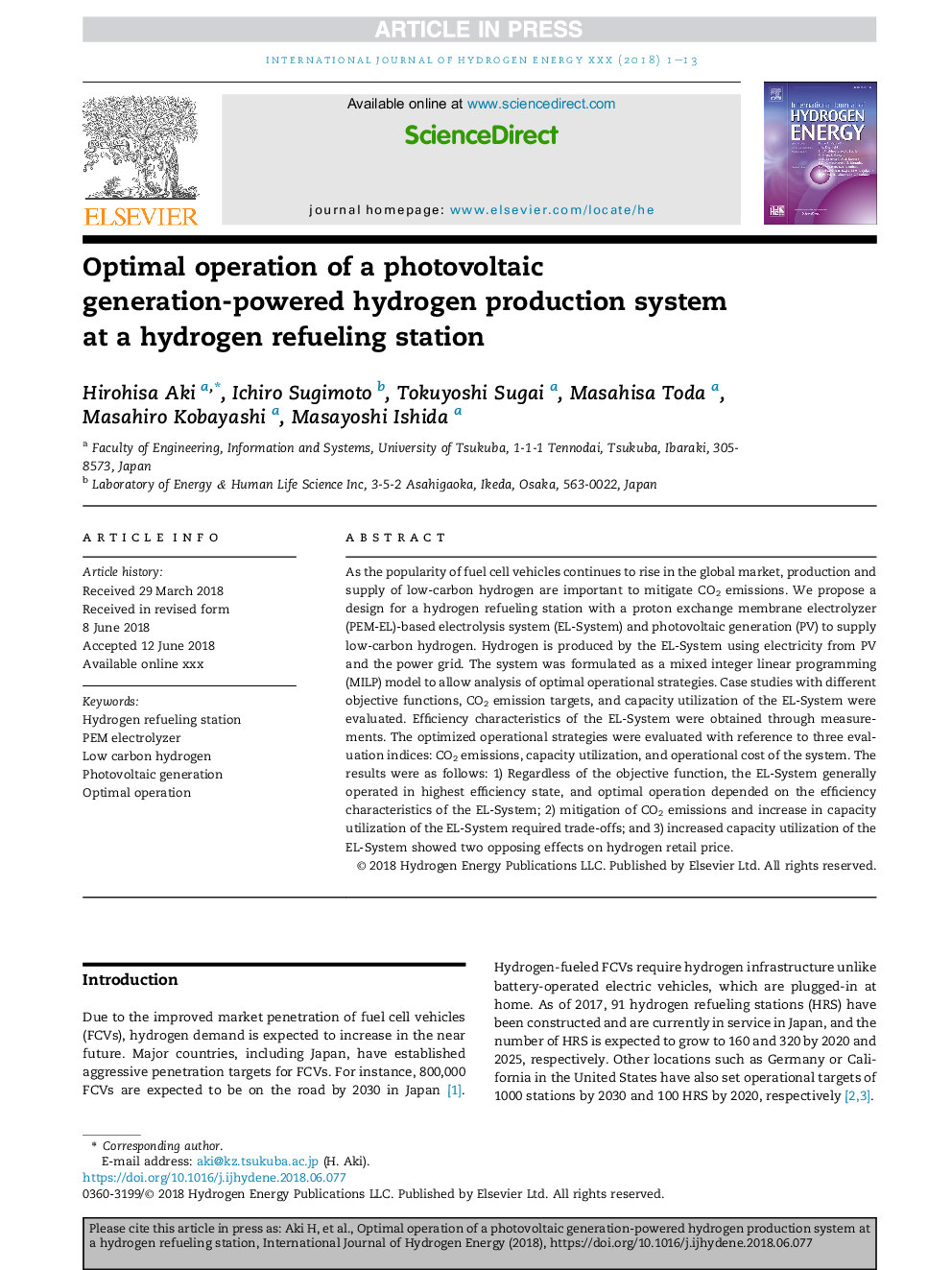| Article ID | Journal | Published Year | Pages | File Type |
|---|---|---|---|---|
| 7705244 | International Journal of Hydrogen Energy | 2018 | 13 Pages |
Abstract
As the popularity of fuel cell vehicles continues to rise in the global market, production and supply of low-carbon hydrogen are important to mitigate CO2 emissions. We propose a design for a hydrogen refueling station with a proton exchange membrane electrolyzer (PEM-EL)-based electrolysis system (EL-System) and photovoltaic generation (PV) to supply low-carbon hydrogen. Hydrogen is produced by the EL-System using electricity from PV and the power grid. The system was formulated as a mixed integer linear programming (MILP) model to allow analysis of optimal operational strategies. Case studies with different objective functions, CO2 emission targets, and capacity utilization of the EL-System were evaluated. Efficiency characteristics of the EL-System were obtained through measurements. The optimized operational strategies were evaluated with reference to three evaluation indices: CO2 emissions, capacity utilization, and operational cost of the system. The results were as follows: 1) Regardless of the objective function, the EL-System generally operated in highest efficiency state, and optimal operation depended on the efficiency characteristics of the EL-System; 2) mitigation of CO2 emissions and increase in capacity utilization of the EL-System required trade-offs; and 3) increased capacity utilization of the EL-System showed two opposing effects on hydrogen retail price.
Related Topics
Physical Sciences and Engineering
Chemistry
Electrochemistry
Authors
Hirohisa Aki, Ichiro Sugimoto, Tokuyoshi Sugai, Masahisa Toda, Masahiro Kobayashi, Masayoshi Ishida,
